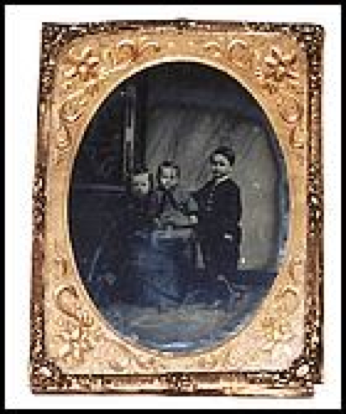Photography
First, the word photography is derived from two Greek words for light and writing. It is an Englishman, Sir John Herschel (1792-1871), who we owe the word "photography" as well as the common terms "negative" and positive" and the word "snap-shot". Herschel, had the good fortune to be around just at the time both Louis Daguerre, (pronounced Da gair’) and Henry Fox Talbot were announcing their discoveries. All three men made great contributions to the process of creating permanent images.
Henry Talbot was born in Dorset, England, in 1800 and was a gifted scholar, excelling in mathematics and deciphering of ancient cuneiform inscriptions. It was his inability of drawing which caused him to experiment with a mechanical method of capturing and retaining an image. Talbot had been working on his techniques since 1835 and made it public when word of the Daguerre process reached England in January 1839. He wrote to the Royal Academy that he had been able to produce an image onto paper in 1-3 minutes. Talbot called his process calotype (from the Greek "Kalos", meaning beautiful).
Sir John Herschel became a well-known astronomer, and published an influential book on the subject. He also became interested in capturing and retaining images and managed to fix pictures on paper using hyposulphite of soda. In March 1839 Herschel presented a paper to the Royal Society entitled "The Application of the Chemical Rays of Light to the Purpose of Pictorial Representation."
The Frenchman Louis Daguerre (1787 – 1851) was perhaps the most famous for his photographic process called Daguerreotype. Daguerre advertised his process and sought sponsorship, but few seemed interested. He then turned to the French government which bought the rights to the process and gave it free to the world in August 1839.
In 1840 the Daguerreotype was first introduced to the United States by Samuel Morse, who is best known as the inventor of the telegraph. He arrived from Paris with this new invention and the impact was immediate. To the wonderment of everyone a picture had been produced directly on the silvered and brilliantly polished surface of a copper plate. Thus a new visual language became available and a flurry of daguerreotypists began to swarm over the American countryside, following trails already established by traveling portrait painters. Now an exact likeness could be produced more rapidly and cheaply than a painting. Needless to say, portrait painters were not very happy with photography.

Pre-Civil War Daguerreotype Image
Ultimately, the modern photographic process came about from a series of refinements and improvements. In 1884 George Eastman, of Rochester, New York, developed dry gel on paper, or film, to replace the photographic plate so that a photographer no longer needed to carry boxes of plates and toxic chemicals around. In July 1888 Eastman's Kodak camera went on the market with the slogan "You press the button, we do the rest". Now anyone could take a photograph and leave the complex parts of the process to others, and photography became available for the mass-market in 1901 with the introduction of the Kodak Brownie.
